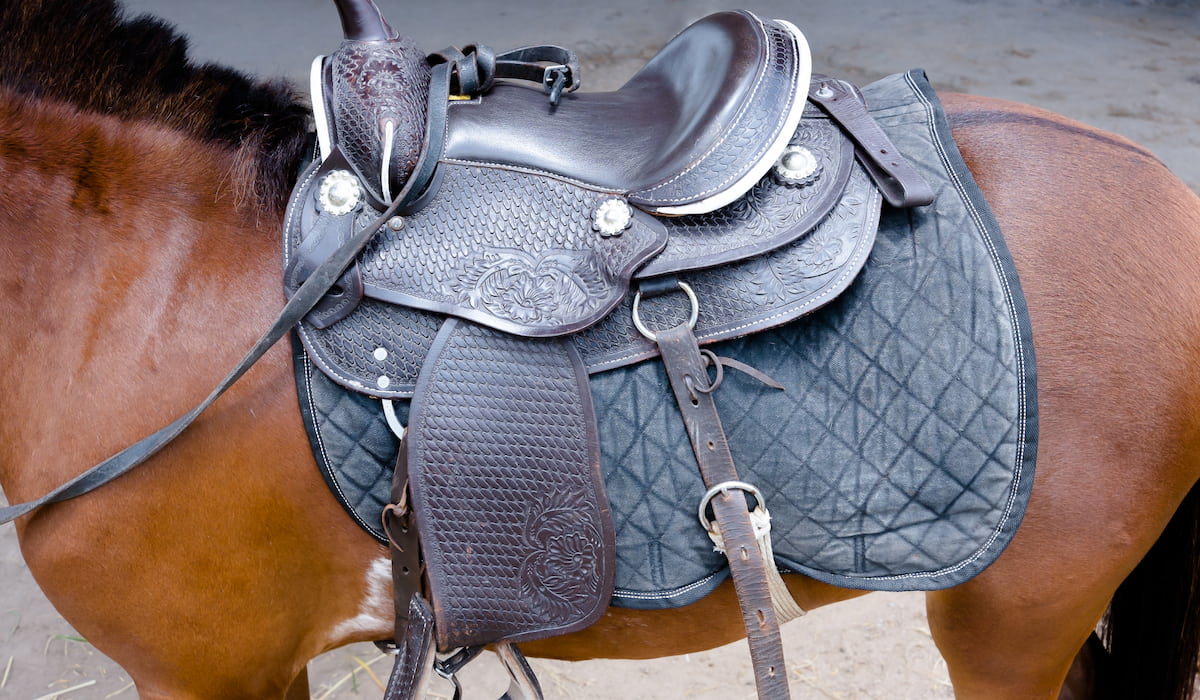Horse Saddles 101: Everything You Need to Know Before Making Your First Purchase
If you're a horse owner who's practising riding, chances are you're searching for the right saddle. Sure, it's the priciest gear you'll invest in, but also, the most important one. It's crucial to choose wisely, not just based on the price, but for other reasons too. If you're new to horses saddlery, here are a few things to have in mind.
Types of Saddles
 |
| Source: helpfulhorsehints.com |
Showjumping
Show jumping is a thrilling sport where a rider and horse aim to clear all the fences in a course without knocking any down, sometimes against a time limit. It's usually done in an arena, either indoors or outdoors, in front of a judge and often a crowd. Beginners start with lower fences at 70cm, while professionals can jump up to 1.40m.
The showjumping saddle is specially designed for close contact, with forward-cut flaps to help the horse arch over the fence and the rider to maintain the necessary height. Riders in show jumping have shorter stirrups, so the saddle's flap is shorter and more forward-cut compared to dressage saddles.
Dressage
Dressage is a great discipline that's now recognized as a key method for training and riding your horse on flat ground. The word "dressage" itself means "to train." Dressage saddles are made with a deeper seat and longer flaps compared to other saddles. This design of the horses saddlery helps the rider stay secure during movements like sitting trot, while also allowing the horse's shoulder to move freely for lateral movements such as half pass.
General Purpose
General purpose riding is perfect for riders who enjoy a variety of activities but at a more beginner level where specialized saddles aren't necessary. It's also a great way to save money for riders who like to go on leisurely rides, do some basic training, and jump lower fences, as they only need one saddle for everything.
This one is great because it's not too straight or too forward-cut, and it has a semi-deep seat. Many people consider GP saddlery to be the most comfortable because manufacturers understand that amateur or leisure riders spend a lot of time in the saddle. Since GP saddles are often used for hacking out, comfort is extremely important.
Trekking
You can sit lightly or stand in the stirrups for a long time with these saddles. These are typically designed to be minimalistic and lightweight, ensuring maximum comfort for both the horse and the rider.
Pony Saddles
Ponies are specifically designed for children and teenagers. The most crucial thing about these saddles is how they are constructed to ensure the proper development of young skeletons. The cantles on these are narrower compared to adult saddles, allowing them to fit the pelvis and hip joints of kids. When selecting a saddle, it's important to consider not interfering with the natural and proper development of the child.
Junior saddles have deep and soft seats, along with woollen panels, providing the best possible fit. Additionally, kids' saddles usually have knee blocks attached with velcros, enabling them to position their legs correctly without going too far forward. This solution helps children feel more secure. During the intense phase of development, kids must use saddles that are tailored to their sizes and needs.
Leather or Synthetic?
 |
| Source: howtheyplay.com |
Synthetic saddles have come a long way from their early days of bright colours and nylon fabric. Now they are made of synthetic leather and suede, giving them a more traditional look. They are lightweight, easy to clean, and come in a variety of styles for both English and Western riding. And if you still want a pop of colour, you can find synthetic saddles in various shades.
On the other hand, leather saddles are the classic choice. But not all leather is the same quality, so be sure to look for well-made saddles with good stitching and fittings. Investing in a high-quality leather saddle and taking good care of it will ensure it lasts for a long time.
Find the Right Fit
It's crucial for you, and for your horse that the saddle you purchase fits your horse properly. When buying a saddle, whether online or elsewhere, it's always best to consult with a saddle fitter. It's important to grasp the terminology, learn measuring tips, and get general information about saddles. However, this basic knowledge isn't a substitute for a professional saddle fitter.
Size
The distance from the manufacturer's stud to the middle of the cantle determines the seat size. It's crucial for your comfort, but make sure the saddle panels don't extend past your horse's last rib to avoid causing back damage. Seat sizes vary from 35cm to 48cm, with 40 to 44.5 cm being the most common. Smaller seats are usually for smaller horses or ponies and riders. The saddle's width is measured at the front where the wither is located, focusing on the horse's fit. Saddle fittings range from narrow to extra wide.



Comments
Post a Comment